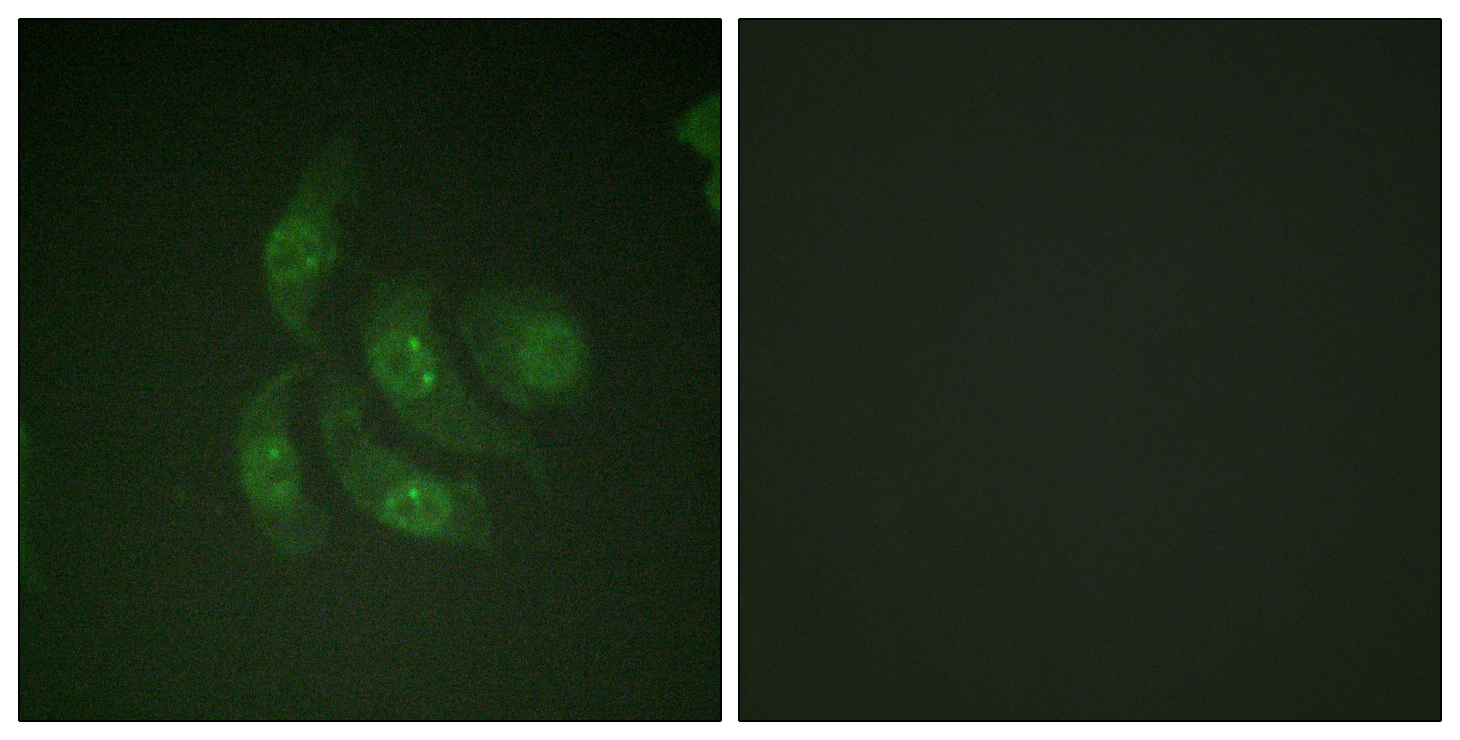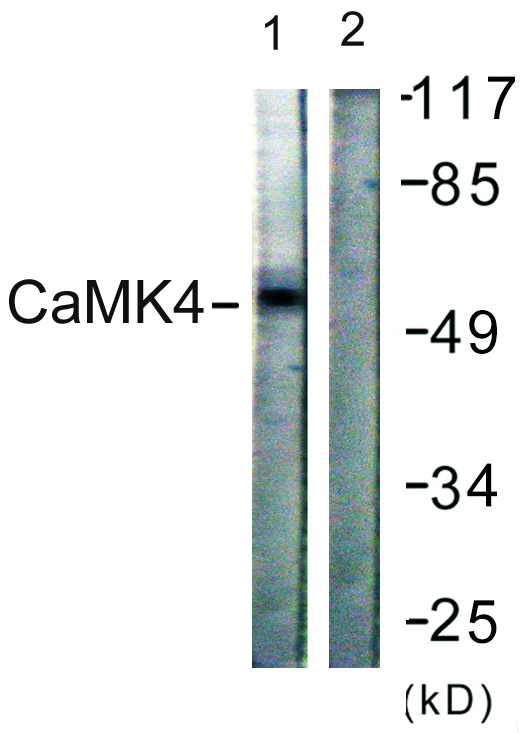CaMKIV Polyclonal Antibody
- Catalog No.:YT0627
- Applications:WB;IHC;IF;ELISA
- Reactivity:Human;Mouse;Rat
- Target:
- CaMKIV
- Fields:
- >>Calcium signaling pathway;>>cAMP signaling pathway;>>Longevity regulating pathway;>>Apelin signaling pathway;>>Osteoclast differentiation;>>Long-term potentiation;>>Neurotrophin signaling pathway;>>Cholinergic synapse;>>Oxytocin signaling pathway;>>Aldosterone synthesis and secretion;>>Amphetamine addiction;>>Alcoholism;>>Glioma
- Gene Name:
- CAMK4
- Protein Name:
- Calcium/calmodulin-dependent protein kinase type IV
- Human Gene Id:
- 814
- Human Swiss Prot No:
- Q16566
- Mouse Swiss Prot No:
- P08414
- Rat Gene Id:
- 25050
- Rat Swiss Prot No:
- P13234
- Immunogen:
- The antiserum was produced against synthesized peptide derived from human CaMK4. AA range:166-215
- Specificity:
- CaMKIV Polyclonal Antibody detects endogenous levels of CaMKIV protein.
- Formulation:
- Liquid in PBS containing 50% glycerol, 0.5% BSA and 0.02% sodium azide.
- Source:
- Polyclonal, Rabbit,IgG
- Dilution:
- WB 1:500 - 1:2000. IHC 1:100 - 1:300. IF 1:200 - 1:1000. ELISA: 1:5000. Not yet tested in other applications.
- Purification:
- The antibody was affinity-purified from rabbit antiserum by affinity-chromatography using epitope-specific immunogen.
- Concentration:
- 1 mg/ml
- Storage Stability:
- -15°C to -25°C/1 year(Do not lower than -25°C)
- Other Name:
- CAMK4;CAMK;CAMK-GR;CAMKIV;Calcium/calmodulin-dependent protein kinase type IV;CaMK IV;CaM kinase-GR
- Observed Band(KD):
- 60kD
- Background:
- The product of this gene belongs to the serine/threonine protein kinase family, and to the Ca(2+)/calmodulin-dependent protein kinase subfamily. This enzyme is a multifunctional serine/threonine protein kinase with limited tissue distribution, that has been implicated in transcriptional regulation in lymphocytes, neurons and male germ cells. [provided by RefSeq, Jul 2008],
- Function:
- catalytic activity:ATP + a protein = ADP + a phosphoprotein.,enzyme regulation:Activated by Ca(2+)/calmodulin. Binding of calmodulin may releave intrasteric autoinhibition. Must be phosphorylated to be maximally active. Phosphorylated by CAMKK1 or CAMKK2. Autophosphorylation of the N-terminus is required for full activation. In part, activity is independent on Ca(2+)/calmodulin and autophosphorylation of Ser-336 allows to switch to a Ca(2+)/calmodulin-independent state (By similarity). Probably inactivated by serine/threonine protein phosphatase 2A.,function:Calcium/calmodulin-dependent protein kinase belonging to a proposed calcium-triggered signaling cascade. May be involved in transcriptional regulation. May be involved in regulation of microtubule dynamics. In vitro, phosphorylates CREB1, CREBBP, PRM2, MEF2A, MEF2D and STMN1/OP18. May be involved in spermatogenesis. May play a role i
- Subcellular Location:
- Cytoplasm. Nucleus. Localized in hippocampal neuron nuclei. In spermatids, associated with chromatin and nuclear matrix (By similarity). .
- Expression:
- Expressed in brain, thymus, CD4 T-cells, testis and epithelial ovarian cancer tissue.
- June 19-2018
- WESTERN IMMUNOBLOTTING PROTOCOL
- June 19-2018
- IMMUNOHISTOCHEMISTRY-PARAFFIN PROTOCOL
- June 19-2018
- IMMUNOFLUORESCENCE PROTOCOL
- September 08-2020
- FLOW-CYTOMEYRT-PROTOCOL
- May 20-2022
- Cell-Based ELISA│解您多样本WB检测之困扰
- July 13-2018
- CELL-BASED-ELISA-PROTOCOL-FOR-ACETYL-PROTEIN
- July 13-2018
- CELL-BASED-ELISA-PROTOCOL-FOR-PHOSPHO-PROTEIN
- July 13-2018
- Antibody-FAQs
- Products Images

- Immunofluorescence analysis of HepG2 cells, using CaMK4 Antibody. The picture on the right is blocked with the synthesized peptide.

- Immunohistochemistry analysis of paraffin-embedded human brain tissue, using CaMK4 Antibody. The picture on the right is blocked with the synthesized peptide.

- Western blot analysis of lysates from K562 cells, treated with H2O2 100uM 30', using CaMK4 Antibody. The lane on the right is blocked with the synthesized peptide.



